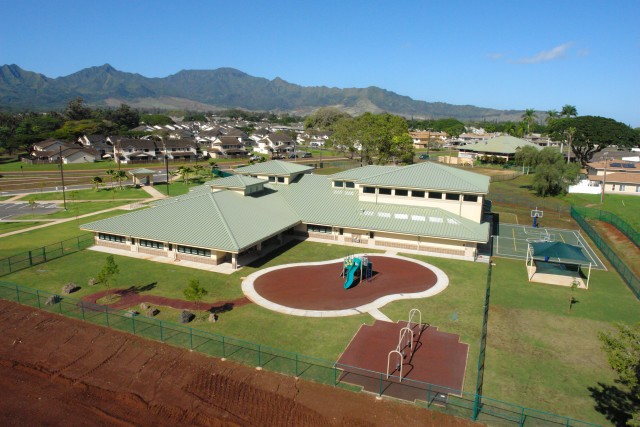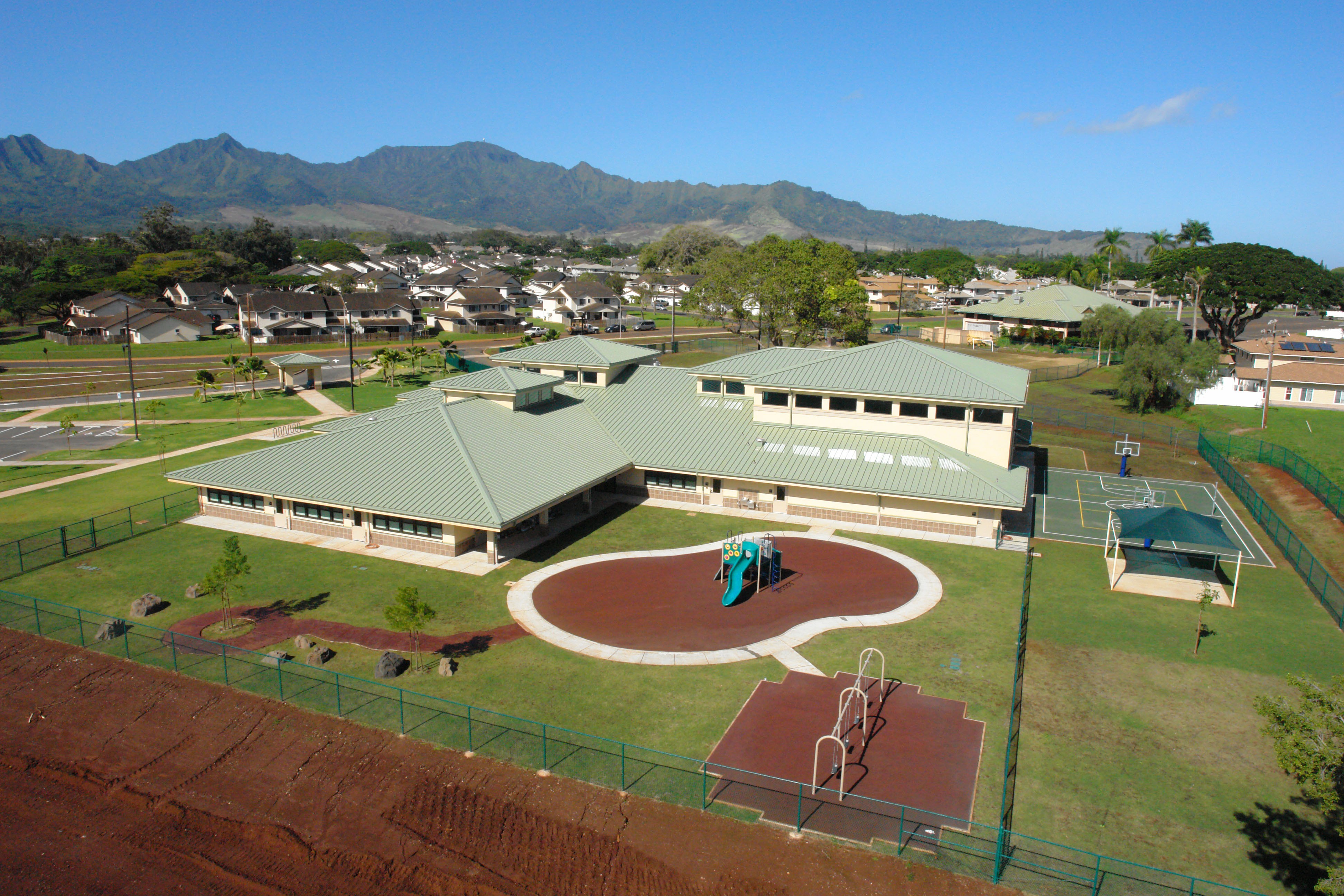SCHOFIELD BARRACKS, Hawaii - The School Age Center, here, is another example of U.S. Army Garrison-Hawaii's ongoing efforts to support the Army Family Covenant by ensuring excellence in schools, youth services and child care.
The $12.3-million center is named "Napua Koa," or Children of the Warrior, and opened last year for children ages 6-10.
In addition, the U.S. Army Corps of Engineers-Honolulu District recently received its first Leadership in Energy and Environmental Design, or LEED, gold certification for this fiscal year 2007 USAG-HI project as well as Project Delivery Team for 2010.
COE-HD's design-build contractor for the project, Nan, Inc., received an outstanding performance award and safety excellence award for the center.
The School Age Center has all the things one would expect to find in a place of learning, such as classrooms, study areas, a computer lab and a multipurpose room. Also, five separate program rooms, including a performing arts room, an outdoor soccer field and a basketball court, complement the learning environment.
"The last time a building was built here for this particular age group was the Bennett Youth Center in 1988," said Mark Maddox, transition specialist with the Directorate of Family and Morale, Welfare and Recreation's Child, Youth and School Services. "We went from an enrollment of 90 children and a no wait list, to an enrollment of 200 children and a wait list in this new building."
What makes this building special is that it's been ranked LEED Gold; this certification is the recognized standard for measuring building sustainability.
The LEED green building certification program encourages and accelerates global adoption of sustainable green building and development practices, according to project architect, John Fullmer, of Mason Architects in Honolulu.
LEED promotes a whole-building approach to sustainability, recognizing performance in five key areas of human and environmental health: sustainable site development, water savings, energy efficiency, materials selection and indoor environmental quality.
The LEED green building rating system - developed and administered by the U.S. Green Building Council - promotes design and construction practices that increase profitability, while reducing the negative environmental impacts of buildings and improving occupant health and well-being.
The rating system offers four certification levels for new construction - certified, silver, gold and platinum - that correspond to the number of credits accrued in five green design categories: sustainable sites, water efficiency, energy and atmosphere, materials and resources, and indoor environmental quality.
This project earned 42 points on the LEED scale.
"We used products and materials with very little volatile organic compounds and took extra steps during the installation of the air conditioning units to ensure that construction dust did not enter the new ducts," Fullmer said.
"We also harnessed the heat given off from the air conditioners, by putting it back into the system to heat the water for the entire building," he said, "and 28 percent of our total building materials were recycled content and from local manufacturers."
Although the project was based on a standard Army design, Fullmer was able to play around with how the building looked, including adding skylights to take advantage of Hawaii's natural light.


Social Sharing